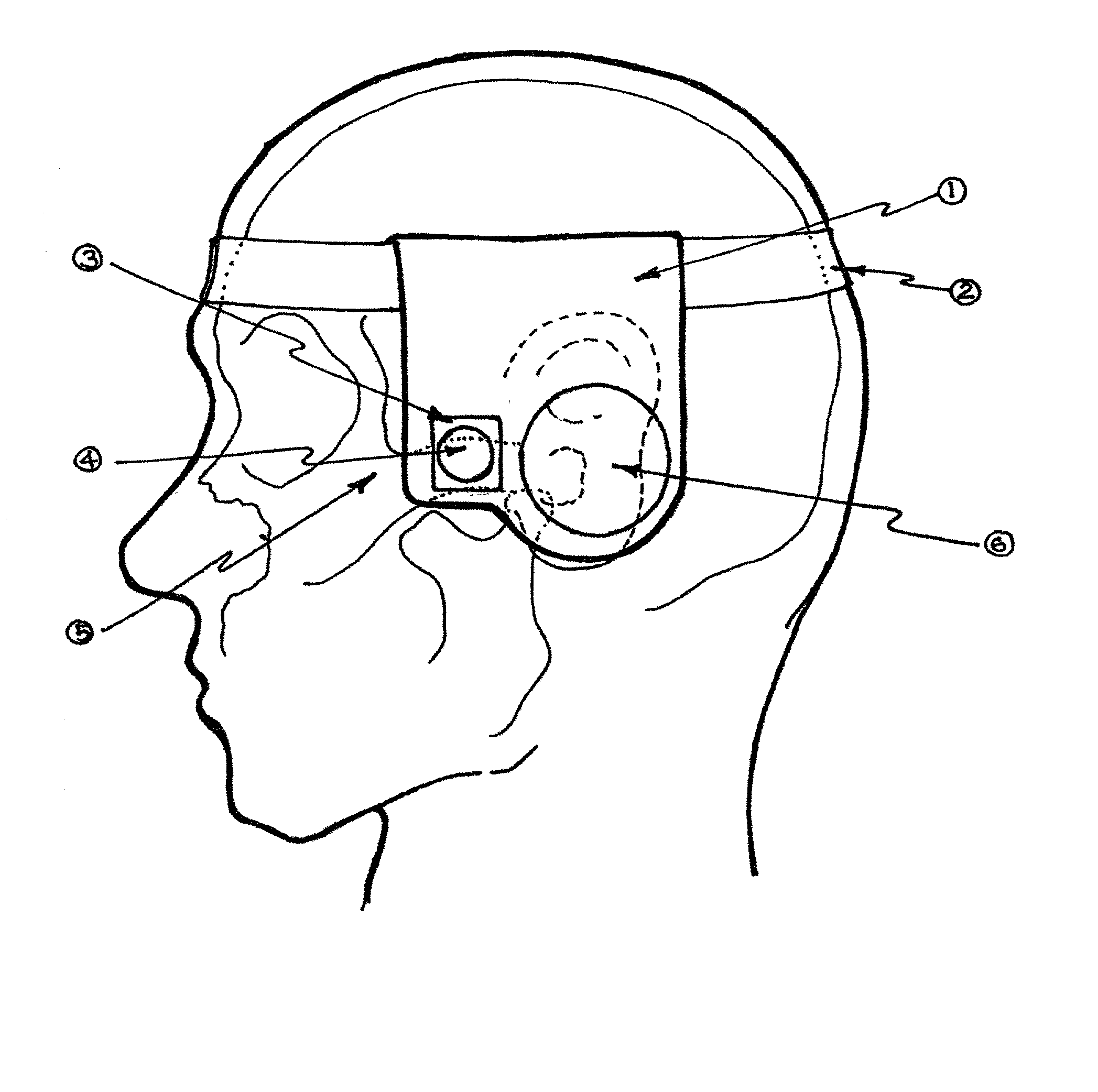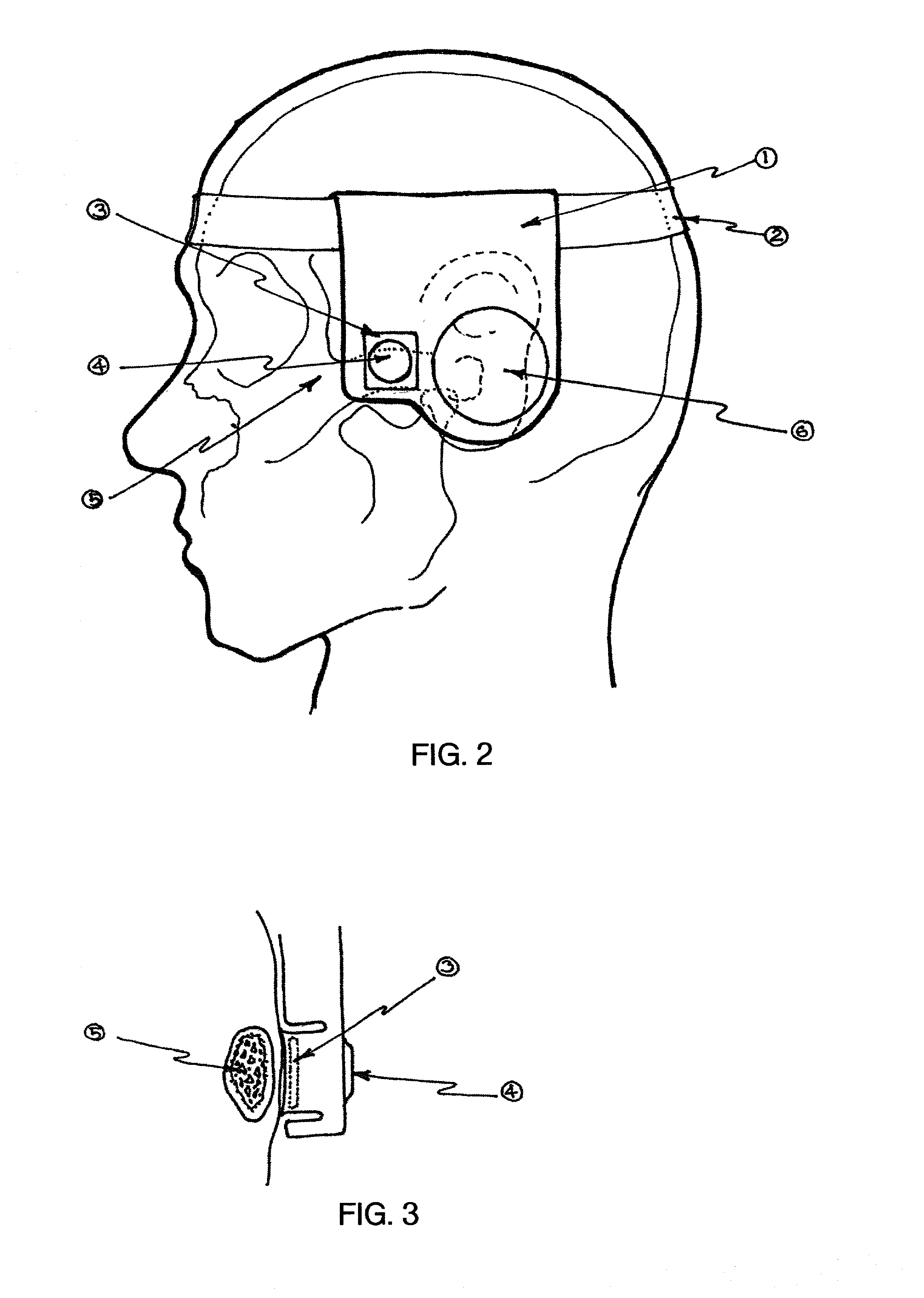Directional sensors for head-mounted contact microphones
a microphone and directional sensor technology, applied in the field of directional sensors, can solve the problems of microphones more suited, sensors less suited to environments, and sound traveling through one medium is not readily transmitted through another,
- Summary
- Abstract
- Description
- Claims
- Application Information
AI Technical Summary
Benefits of technology
Problems solved by technology
Method used
Image
Examples
Embodiment Construction
[0022] It has surprisingly been discovered that contact sensors can be built that provide inherent unidirectional discrimination against noise. Such sensors are useful in a wide range of applications, particularly where a sensor is located between two material phases. The unidirectional sensors were shown to favor vibrations traversing one (typically less dense) phase to another (typically more dense) phase over vibrations transiting the opposite direction. These sensors are applicable to a wide range of piezoelectric sensing where it is desired to favor reception of vibrations from one direction across a phase barrier (liquid to air; solid to air; solid to liquid) over the other phase. Space limitations preclude a listing of all possible applications for the new sensor, but the combined use of these sensors with new types of head mounted contact microphones, as discovered by the inventor are particularly desirable.
[0023] Problems exist with conventional head-mounted contact microph...
PUM
 Login to View More
Login to View More Abstract
Description
Claims
Application Information
 Login to View More
Login to View More - R&D
- Intellectual Property
- Life Sciences
- Materials
- Tech Scout
- Unparalleled Data Quality
- Higher Quality Content
- 60% Fewer Hallucinations
Browse by: Latest US Patents, China's latest patents, Technical Efficacy Thesaurus, Application Domain, Technology Topic, Popular Technical Reports.
© 2025 PatSnap. All rights reserved.Legal|Privacy policy|Modern Slavery Act Transparency Statement|Sitemap|About US| Contact US: help@patsnap.com



